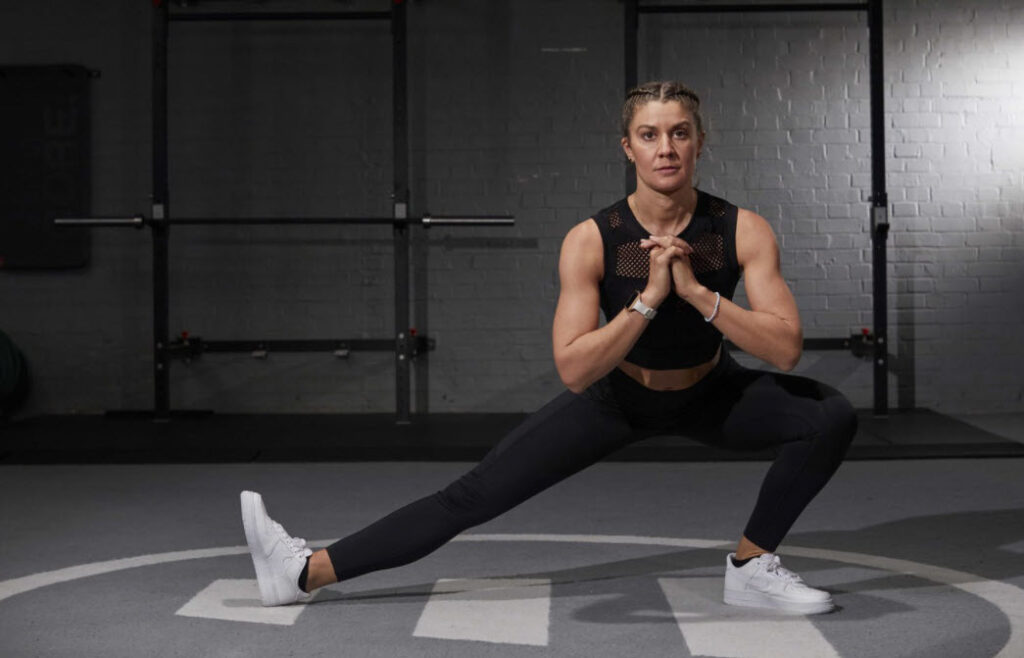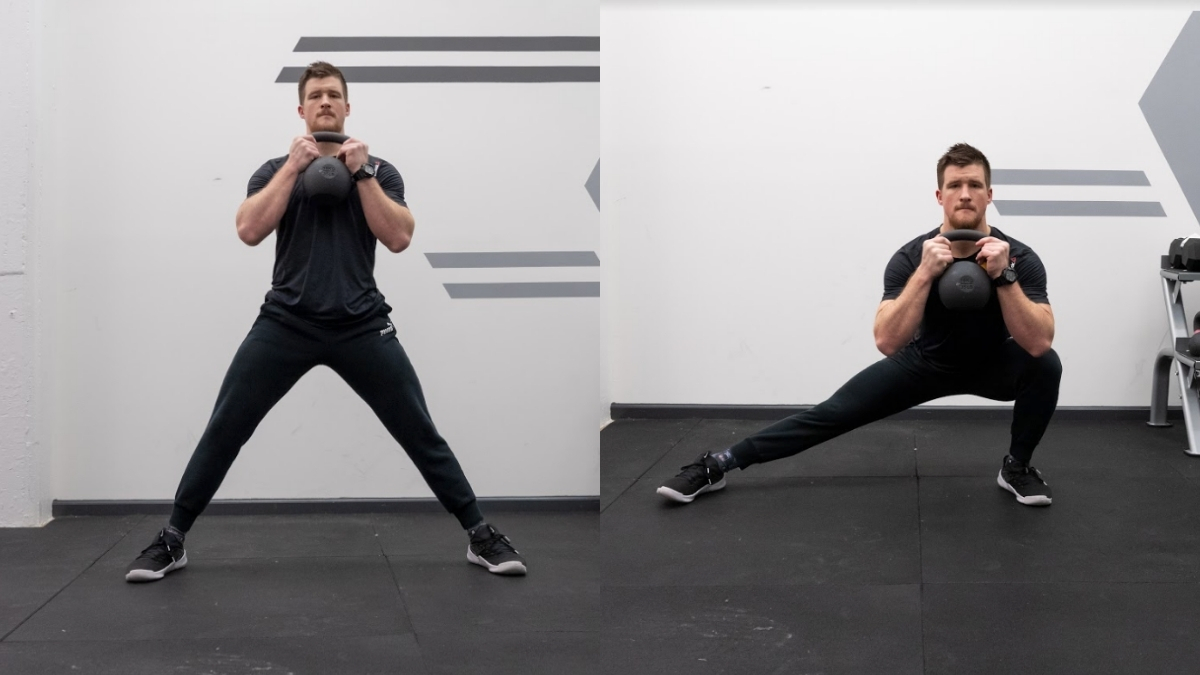Cossack Squat: Master This Move For Strength & Mobility!
Are you seeking a workout that challenges your strength, boosts your flexibility, and unlocks a new level of athleticism? The Cossack squat, a dynamic and demanding exercise, might be the missing piece in your fitness regimen.
Often overlooked in favor of more conventional exercises, the Cossack squat, also known as the sideways squat, offers a plethora of benefits, making it a valuable addition to any training program. This comprehensive guide delves into the intricacies of this compelling movement, providing you with all the knowledge you need to master it and reap its rewards.
Let's delve into the core of this impressive exercise. The Cossack squat is, at its heart, a unilateral squat variation, meaning it's performed on one leg at a time. This inherently demands a higher level of stability and balance compared to traditional squats. While your body descends into a deep lateral lunge position on one side, the other leg remains straight, stretched out to the side. This unique configuration not only enhances lower body strength but also significantly improves hip mobility, flexibility, and overall athletic performance. Beyond the obvious benefits, the Cossack squat also engages your core muscles, adding an element of trunk stability that is crucial for everyday movements and various sports activities.
Let's break down the foundational elements of the Cossack squat. Starting position involves a wide stance, much wider than you'd use for a standard squat. Your toes should be pointed out to the sides. As you begin the movement, shift your weight over to one leg, bending the knee of that leg and allowing your hips to sink down. Simultaneously, the other leg remains straight, ideally with the foot flexed and the heel on the floor. Proper form is paramount: keep your chest up, your back straight, and your knee tracking over your toes of the squatting leg. This ensures optimal muscle engagement and minimizes the risk of injury.
The beauty of the Cossack squat lies in its versatility. It's a fantastic tool for all fitness levels, offering modifications that cater to beginners and advanced athletes alike. Beginners can start with the "supported Cossack squat," holding onto a stable support like a squat rack or TRX strap. This assistance makes it easier to control the descent and rise, especially if ankle mobility is limited. As you gain strength and confidence, you can gradually progress to the unsupported version, adding weight (dumbbells or kettlebells) to further challenge your muscles and improve your performance. For the more experienced athletes, adding weight via a KB or DB held in front is a great way to increase the intensity. This is also an excellent way to build strength, flexibility and resilience in your hips and ankles.
Here's a table with comprehensive information about the Cossack squat. This table provides a concise summary of the exercise's core elements.
| Aspect | Details |
|---|---|
| Definition | A unilateral squat variation performed by squatting on one leg while the other leg remains straight to the side. |
| Muscles Worked | Glutes, quadriceps, hamstrings, adductors (inner thigh), core (for stability). |
| Benefits | Improved hip mobility, enhanced flexibility, increased lower body strength, better balance, improved core stability, enhanced athletic performance. |
| Proper Form | Wide stance, toes pointed outwards, keep chest up, back straight, knee tracking over toes of squatting leg, other leg straight with foot flexed. |
| Common Mistakes | Rounding the back, letting the knee cave inward, not keeping the chest up, inadequate range of motion. |
| Variations | Supported Cossack squat (holding a support), adding weight (dumbbell, kettlebell). |
| Who Should Do It | Individuals of all fitness levels looking to improve lower body strength, flexibility, and mobility. Athletes and those with sedentary lifestyles will benefit greatly. |
| Progression | Start with assisted versions, gradually increase range of motion, add weight as strength improves. |
| Trainer Tips | Focus on controlled movements, prioritize proper form, and listen to your body. Engage your core throughout the exercise. |
| Similar Exercises | Side lunge, lateral squat, sumo squat. |
One of the fundamental benefits of the Cossack squat lies in its ability to enhance hip mobility. The deep lateral movement actively stretches the hip flexors, adductors, and hamstrings, which are often tight in individuals who spend extended periods sitting. This increased mobility not only improves range of motion but can also alleviate discomfort and reduce the risk of injury during other exercises and daily activities. As Carl Baird DC, MS demonstrates, this is an incredible lower body exercise to help improve hip strength and function.
Beyond mobility, the Cossack squat is a powerful tool for building strength and stability. The unilateral nature of the exercise forces each leg to work independently, engaging the glutes, quads, and hamstrings to a greater extent than bilateral exercises. This is particularly effective for correcting muscle imbalances and building a more well-rounded physique. Additionally, the exercise challenges your core muscles to stabilize your trunk, improving your balance and overall functional strength. The Cossack squat is like the rogue twin of side lunges, just begging to show off, and it utilizes your core muscles for trunk stability. Honestly, there's barely a muscle left inactive during this move.
However, like any exercise, the Cossack squat has its nuances. Common mistakes include rounding the back, letting the knee cave inward, and not achieving a full range of motion. To avoid these pitfalls, focus on maintaining a straight back, keeping your chest up, and ensuring your knee tracks over your toes. If you find the full depth challenging, start with a modified version or supported variation. Start with your feet in a wide stance and with your toes pointing out to the sides. Squat to the right, going as low as it feels comfortable, then return to the starting position and repeat on the left side. Proper execution is the key to unlocking the Cossack squat's full potential, so practice the correct form diligently.
The Cossack squat is more than just a lower body exercise; it's a comprehensive movement that integrates flexibility, strength, and stability. The Cossack squat will challenge your hip, knee, and ankle flexibility.especially if you sit a lot, having those hips opened up feels good af. Whether you're a seasoned athlete or a fitness enthusiast looking to add a new dimension to your training, the Cossack squat offers a wealth of benefits. It is a great way to stretch your hamstring and groin muscles while improving hip mobility. In the video above, we are walked through the three training phases of the bodyweight cossack squat.
As you become more proficient, you can experiment with variations to challenge your muscles further. Adding weight, through a dumbbell or kettlebell, increases the intensity and builds more strength. You can also vary the tempo of the exercise, performing the descent and ascent slowly to increase time under tension. The possibilities are endless, allowing you to tailor the Cossack squat to your specific fitness goals.
Cossack squats are an excellent way to build strength, flexibility, and resilience in your hips and ankles. On the first day i came to do them, i found myself lacking in all of these areas. For the more experienced add some weight via a kb or db held in front. This makes it a harder variation than the typical squat, as the squatting leg's mobility and strength are highly challenged, while the straight leg's adductors and hamstrings are stretched significantly. Cossack squats require precision and control. To gain all the advantages and to avoid any injuries, you need to execute correctly. Remember that the Cossack squat is a unique movement that can promote strength and mobility.


